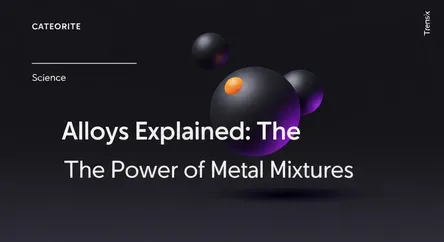Science
Alloys Explained: The Power of Metal Mixtures

Learn what an alloy is, why these engineered metal mixtures are trending in tech and industry, and how they impact our daily lives.
What is it?
An alloy is a substance made by melting two or more elements together, at least one of which is a metal. The resulting mixture has metallic properties that are often superior to those of its pure components. For example, steel is an alloy of iron and carbon, making it much stronger than pure iron. Other common examples include brass (copper and zinc) and bronze (copper and tin). By carefully selecting and combining elements, scientists can create alloys with specific characteristics, such as increased strength, hardness, durability, or resistance to corrosion. This process of creating and studying alloys is a key part of metallurgy and material science.
Why is it trending?
Alloys are trending due to the relentless demand for high-performance materials in advanced technology sectors. Industries like aerospace, electric vehicles, and renewable energy require materials that are lightweight yet incredibly strong and can withstand extreme temperatures and pressures. This has spurred research into "superalloys" and novel high-entropy alloys for use in jet engines and next-generation batteries. Furthermore, the push for sustainability and circular economies makes alloy development crucial for creating more durable, long-lasting products that are easier to recycle and reuse.
How does it affect people?
Alloys are fundamental to modern life and are found everywhere. The buildings we live and work in are supported by steel alloy beams. The cars, planes, and trains we use for transport rely on lightweight aluminum alloys for fuel efficiency and performance. In our homes, stainless steel alloys are used in kitchen appliances and cutlery for their rust resistance. Even in medicine, biocompatible titanium alloys are essential for making life-saving medical implants like artificial hips and dental fixtures. They make countless products safer, more reliable, and more efficient.